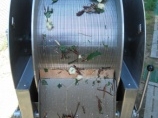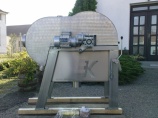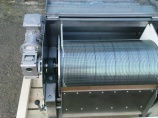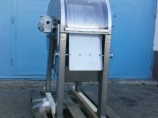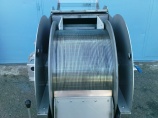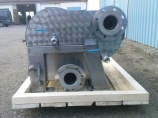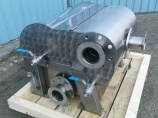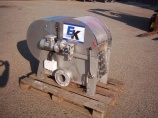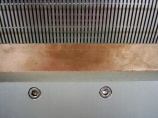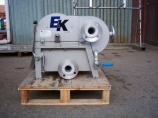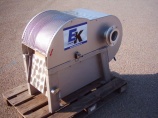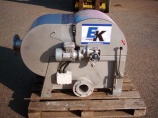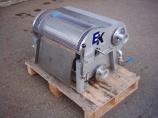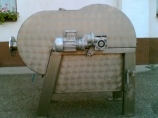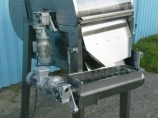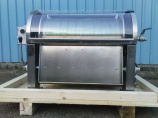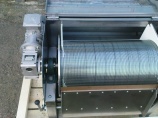Rotary screens
The rotating wiped screen is equipment for continuous separation of larger mechanical impurities (undissolved matters) from wastewaters of different characters. The work sieve is produced by winding of wire of trapezoidal cross-section on a framework to the shape of cylinder, whereas between single windings there is a gap. The size of gap is selectable and determines the size of impurity, which will be caught. Optional production according to ordered requirements.

Principle of rotating screen function:

Polluted water is delivered by the pump, or flows gravitationally to the head tank of the rotary screen. In the head tank, the stream of water is calmed down. Level of water in the head tank reaches the surface of rotating cylindrical screen. The water flows through the cylindrical screen and falls down to the drain tank. From this place, it flows off through the piping outside of the rotary screen (to the sump, or to the drainage). Impurities, which size exceeds the dimension of the gap, stay on the surface of the cylindrical screen and are wiped by the blade, which bears on the cylindrical screen under acute angle against the rotation direction. The rackings slip down on the blade and fall down to the container, or on the conveyor. The pressure force of the blade is applied by springs; the spring force can be adjusted by adjusting bolts. The head tank is equipped with overflow, which, in case of large inflow of wastewater, drains the excess volume of water back to the pump sump.
Advantages of rotary screen:
Area of application:
Rotary screens are used for cleaning of water containing floating mechanical impurities. They are suitable for broad range of applications. Most frequently they are inserted at the beginning of the technology for cleaning of wastewaters, in front of the floatation unit. With regard to the profile of the gap, they are not suitable for catching of fibrous impurities - for example, of feathers or of bristles.
Parameters:
| Type | Screen diameter (mm) | Screen length (mm) | Dimensions: length x width x height (mm) | Flow rate m3/h. slot (mm) | |||||
|---|---|---|---|---|---|---|---|---|---|
| 0,25 | 0,50 | 0,75 | 1,00 | 1,50 | 2,00 | ||||
| ROSI 270-500 | 270 | 500 | 700 x 880 x 540 (weight about 130 kg) | 2,5 | 6,5 | 8 | 10 | 14,5 | 20 |
| ROSI 500-300 | 500 | 300 | 1280 x 750 x 1000 (weight about 180 kg) | 8 | 13 | 19 | 24 | 30 | 33 |
| ROSI 500-600 | 500 | 600 | 1280 x 1050 x 1000 (weight about 230 kg) | 14 | 24 | 33 | 42 | 52 | 67 |
| ROSI 500-900 | 500 | 900 | 1280 x 1350 x 1000 (weight about 280 kg) | 28 | 50 | 70 | 92 | 121 | 136 |
| ROSI 500-1200 | 500 | 1200 | 1280 x 1650 x 1000 (weight about 350 kg) | 40 | 68 | 96 | 127 | 167 | 187 |
| ROSI 500-1500 | 500 | 1500 | 1280 x 1950 x 1000 (weight about 400 kg) | 50 | 86 | 124 | 163 | 213 | 238 |
| ROSI 914-2000 | 914 | 2000 | 2300 x 2500 x 1650 (weight about 800 kg) | 108 | 188 | 275 | 366 | 485 | 549 |
We produce rotary screens on the basis of customer demand according to a specific placement in operation.
It should be taken into account:
- the amount of waste water
- density of pollution
- type (material) of pollution
- maximal size of impurities run through the sieve
- presence of sticky substances (fat)
Besides separators and rotary screens we produce also dewatering presses.
Video
Download
 | TDP - ROSITechnical and delivery conditions and instruction manualDownload the document - TDP - ROSI (EN).pdf (221kB 743B) |
